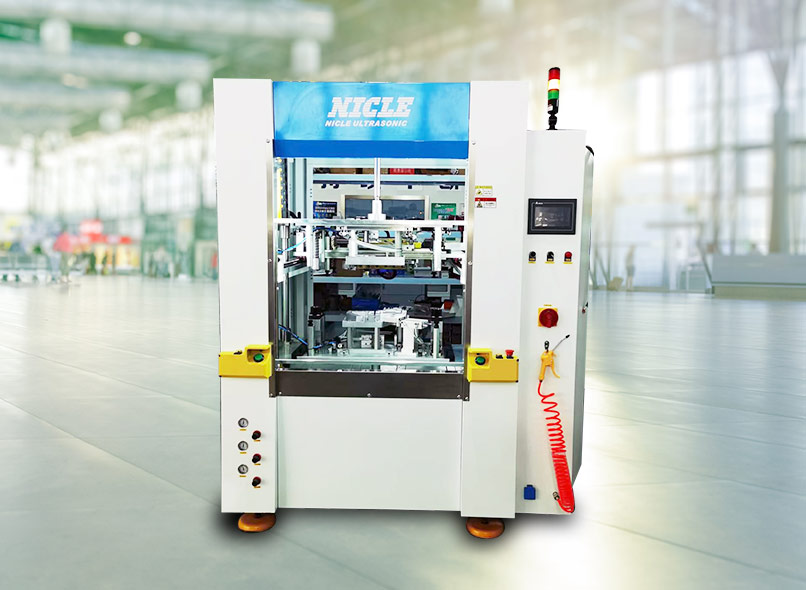Hot plate welding process

Hot plate welding is a widely used thermal welding technique that allows for the strong and airtight joining of thermoplastic parts. This process involves heating the surfaces of the parts to molten temperatures and then bringing them together to form a solid bond. It is particularly effective for materials like polypropylene (PP), polyethylene (PE), and nylon. In this article, we will explore the process of hot plate welding, the materials suitable for this technique, and the advantages it offers in various industries.
What is Hot Plate Welding?
Hot plate welding is a thermal welding technique used to join thermoplastic parts. It involves the use of a heated platen, also known as a hot tool or heating platen, to heat and melt the surfaces of the parts to be joined. Once the interfaces are molten, the hot plate is removed, and the parts are pressed together under pressure to form a strong bond. The process relies on precise temperature control and compression to ensure a successful weld.
Hot plate welding is commonly used for materials like polypropylene (PP), polyethylene (PE), and nylon, which are widely used in industries such as automotive, aerospace, and electronics. This technique allows for the creation of durable and reliable welds that meet the stringent requirements of these industries.
The Hot Plate Welding Process
The hot plate welding process involves several steps that are crucial for achieving a successful weld. Understanding these steps is essential for ensuring the quality and integrity of the final product.
Step 1: Preparation
Before starting the hot plate welding process, it is important to prepare the parts and the hot plate welding machine. The parts to be welded should be cleaned thoroughly to remove any contaminants, such as dirt, grease, or moisture. This can be done using a suitable solvent or cleaning agent. It is also important to ensure that the parts are properly aligned and securely held in place during the welding process.
Step 2: Heating the Parts
Once the parts are prepared, they are placed between the heated platen of the hot plate welding machine. The temperature of the platen is carefully controlled to reach the melting point of the thermoplastic material. The heating time will vary depending on the material and its thickness. During this step, the heat from the platen is transferred to the interface of the parts, causing them to soften and become molten.
Step 3: Compression and Material Displacement
After the parts reach the desired molten temperature, the hot plate is withdrawn, and the parts are brought together under pressure. This compression and material displacement step ensures that the molten surfaces of the parts are in contact and properly fused together. The pressure and displacement continue until the joints are fully formed and the material solidifies.
Step 4: Cooling and Solidification
Once the joint is formed, the parts are allowed to cool and solidify. Cooling time will depend on the material and the size of the welded parts. It is important to ensure that the parts are held in place during the cooling process to prevent any movement or deformation that could compromise the integrity of the weld.
Step 5: Finishing and Inspection
After the weld has cooled and solidified, any excess material or flash can be trimmed or removed. The finished weld should be inspected for any defects, such as voids, cracks, or incomplete fusion. If necessary, additional steps, such as surface finishing or testing, can be performed to ensure the quality of the weld.
Materials Suitable for Hot Plate Welding
Hot plate welding is compatible with a wide range of thermoplastic materials, including polypropylene (PP), polyethylene (PE), and nylon. These materials are commonly used in various industries due to their excellent mechanical properties and chemical resistance.
Polypropylene (PP)
Polypropylene (PP) is a versatile thermoplastic material known for its high strength, stiffness, and chemical resistance. It is widely used in automotive, packaging, and consumer goods industries. PP is particularly suitable for hot plate welding due to its low melting point and good flow properties. The weld strength achieved with PP is often comparable to the strength of the parent material.
Polyethylene (PE)
Polyethylene (PE) is another commonly used thermoplastic material that is suitable for hot plate welding. PE is known for its excellent impact resistance, low moisture absorption, and ease of processing. It is used in applications such as containers, pipes, and packaging. Like PP, PE has a relatively low melting point, making it well-suited for hot plate welding.
Nylon
Nylon is a versatile thermoplastic material with excellent mechanical properties, including high strength and toughness. It is used in various industries, including automotive, aerospace, and electronics. Nylon has a higher melting point compared to PP and PE, which requires careful temperature control during hot plate welding. However, when properly welded, nylon can provide strong and durable joints.
Advantages of Hot Plate Welding
Hot plate welding offers several advantages over other joining methods, making it a preferred choice for many applications in different industries. Some of the key advantages include:
- Strong and Durable Joints: Hot plate welding produces welds that are comparable in strength to the parent material. The fusion of the molten surfaces creates a molecular bond, resulting in a strong and durable joint.
- Air-Tightness: The precise control of temperature and compression in hot plate welding ensures that the joints are airtight. This makes hot plate welding suitable for applications where leak-free seals are critical, such as in automotive fuel tanks or medical devices.
- Compatibility with Various Materials: Hot plate welding can be used with a wide range of thermoplastic materials, including PP, PE, and nylon. This versatility allows for the joining of different components made from different materials, expanding the design possibilities.
- Cost-Effective: Hot plate welding is a cost-effective joining method, as it does not require any additional consumables or adhesives. Once the hot plate welding machine is set up, the process can be repeated efficiently, reducing production time and costs.
- Design Flexibility: Hot plate welding allows for the joining of complex shapes and designs. The molten material can flow and fill intricate features, ensuring a strong bond throughout the joint. This flexibility makes hot plate welding suitable for various industries, including automotive, electronics, and aerospace.
- Environmentally Friendly: Hot plate welding does not generate any harmful fumes or emissions, making it an environmentally friendly joining method. It eliminates the need for solvents or adhesives that may contain volatile organic compounds (VOCs) or other hazardous substances.
- Consistent Weld Quality: Hot plate welding offers consistent and repeatable weld quality, ensuring reliable and uniform joints. The precise control of temperature, pressure, and welding time allows for consistent results, reducing the risk of defects or weak welds.
In conclusion, hot plate welding is a versatile and reliable joining method for thermoplastic materials like polypropylene (PP), polyethylene (PE), and nylon. It offers strong and durable joints, airtight seals, and design flexibility, making it suitable for various industries. With its cost-effectiveness and environmentally friendly nature, hot plate welding is a preferred choice for many applications. By understanding the process and selecting the appropriate materials, manufacturers can achieve high-quality welds and meet the demanding requirements of their products.





